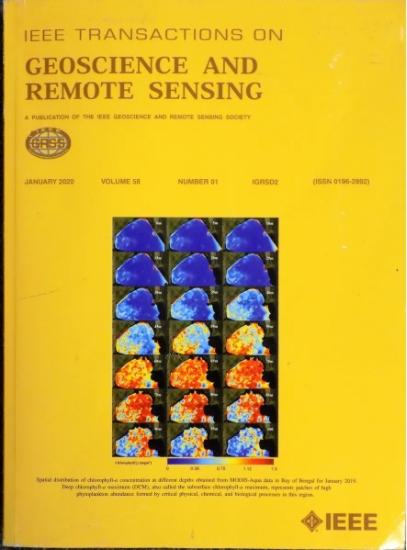Tiny Object Detection in Remote Sensing Images Based on Object Reconstruction and Multiple Receptive Field Adaptive Feature Enhancement
IF 8.6
1区 地球科学
Q1 ENGINEERING, ELECTRICAL & ELECTRONIC
IEEE Transactions on Geoscience and Remote Sensing
Pub Date : 2024-03-25
DOI:10.1109/TGRS.2024.3381774
引用次数: 0
Abstract
Tiny object detection in the field of remote sensing has always been a challenging and interesting topic. Despite many researchers working on this problem, it has not been well-solved due to its complexity. In this article, we analyze the reasons for poor performance of deep-learning-based object detection methods for tiny objects in remote sensing images. Moreover, we propose a new remote sensing image tiny object detection network based on object reconstruction and multiple receptive field adaptive feature enhancement module (MRFAFEM), called ORFENet. Detailedly, object reconstruction aims to reduce the information loss of tiny objects within deep neural networks, which is only used in the training phase and can be discarded in the inference phase. MRFAFEM is designed to enhance the features for detecting tiny objects by dynamically adjusting the multiple receptive field features. We have conducted several experiments on the AI-TODv2 and LEVIR-Ship datasets, both of which are proposed for tiny object detection in remote sensing images. The experimental results indicate the effectiveness of the proposed method. Specifically, the proposed ORFENet can achieve an average precision (AP) of 24.8% on the AI-TODv2 dataset and 83.3% AP50 on the LEVIR-Ship dataset. The code will be released at基于物体重构和多感受野自适应特征增强的遥感图像中的微小物体检测
遥感领域的微小物体检测一直是一个具有挑战性的有趣课题。尽管许多研究人员都在研究这个问题,但由于其复杂性,这个问题一直没有得到很好的解决。本文分析了基于深度学习的遥感图像微小物体检测方法性能不佳的原因。此外,我们还提出了一种基于物体重构和多感受野自适应特征增强模块(MRFAFEM)的新型遥感图像微小物体检测网络,称为 ORFENet。具体来说,物体重构旨在减少深度神经网络中微小物体的信息损失,它只在训练阶段使用,在推理阶段可以丢弃。MRFAFEM 旨在通过动态调整多重感受野特征来增强检测微小物体的特征。我们在 AI-TODv2 和 LEVIR-Ship 数据集上进行了多次实验,这两个数据集都是针对遥感图像中的微小物体检测而提出的。实验结果表明了所提方法的有效性。具体而言,拟议的 ORFENet 在 AI-TODv2 数据集上的平均精度(AP)为 24.8%,在 LEVIR-Ship 数据集上的平均精度(AP50)为 83.3%。代码将在 https://github.com/dyl96/ORFENet 上发布。
本文章由计算机程序翻译,如有差异,请以英文原文为准。
求助全文
约1分钟内获得全文
求助全文
来源期刊

IEEE Transactions on Geoscience and Remote Sensing
工程技术-地球化学与地球物理
CiteScore
11.50
自引率
28.00%
发文量
1912
审稿时长
4.0 months
期刊介绍:
IEEE Transactions on Geoscience and Remote Sensing (TGRS) is a monthly publication that focuses on the theory, concepts, and techniques of science and engineering as applied to sensing the land, oceans, atmosphere, and space; and the processing, interpretation, and dissemination of this information.
 求助内容:
求助内容: 应助结果提醒方式:
应助结果提醒方式:


